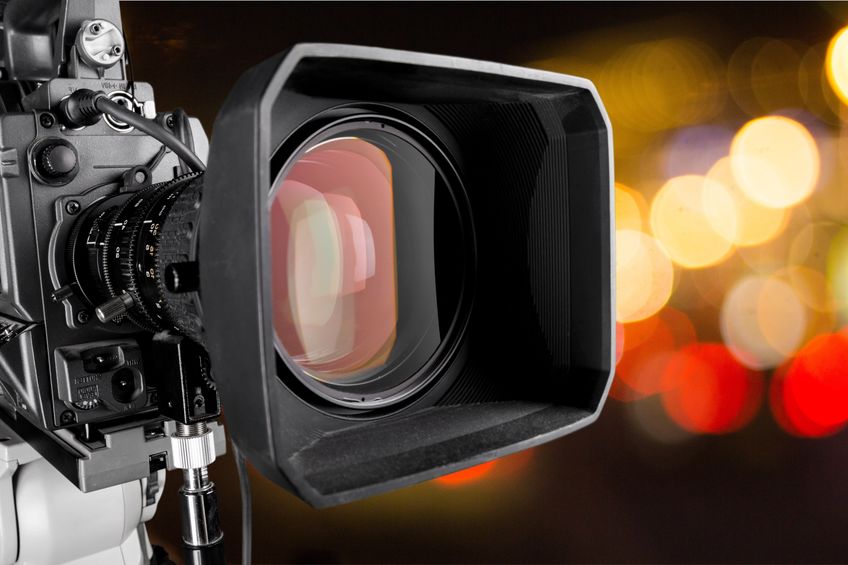Video Terms to know
WRITTEN BY Tim Lewis ON 05.21.24
The video business, like any other, has it’s own unique nomenclature. In this article, we’d like to share with you some of the more common terminology of the video business:
VO – Voice over: audio portion of the script narrated by a professional voice actor.
Scratch VO Track – This is a rough version of the VO we record ourselves so the client can see the script with picture in context. We do this so the client can still change the script before any professional voice actor fees have been incurred.
B-Roll – This is the imagery or extra footage that brings a video to life. It’s a critical component to a great video because it keeps it visually interesting for the viewer. The term comes from the times when video tape editors laid down the master track from an “A-Roll” with the sound and main picture, then added the “B-Roll” or extra footage layer on top in another pass.

MOS – Stands for “mit out sound.” Means picture with no synchronous audio. “Mit” is German for “with.”
Sound Bites – The interview clips that make it into the final video. Sometimes referred to simply as “bites.”
Host/Spokesperson – This is a professional actor that appears on camera representing the company or organization in the video. They are typically addressing the audience looking directly into the camera.
Hollywood – A term for when a crew member simply holds a flag or bounce card to temporarily shape the lighting for a scene.
Sticks – Another term for tripod.
Gaff Tape – Versatile, non-permanent black tape used on a shoot for many purposes like holding microphones or cables in place, marking the floor or covering logos.
Dirt Bags – Sand bags used to secure lighting and microphone stands in place.
Stinger – Power extension cord.
C47 – Clothes pin.
C-Stand – Versatile three legged stand used for lighting, sound and other equipment support.
Courtesy – If a segment of footage from a news organization or other production company is used, frequently a “courtesy of” graphic is placed onscreen during that sequence to give them credit for providing the footage.
In Perpetuity – When the rights to use a voice over artist, on camera host or actor, music track, photo or video clip are granted forever. This typically costs more than the rights to a lesser timeframe.
Narrative – A video that tells a story using typical storytelling elements like character, conflict and resolution. Many narrative videos for marketing simply tell one person’s story of how a company’s product or service helped them.
Evergreen – A term we use to make sure the content in the video doesn’t date stamp the video. We do this by avoiding terms or images that pin down a specific date unless they are relevant to the story.
Proxy – Technical video term for editing with lower resolution reference video clips to allow for easier manipulation of smaller media files early in the editing process.
1080 – Video resolution for standard high definition. It’s the number of pixels horizontally across the screen.
4K – Video resolution for ultra-high definition, about 4,000 pixels wide.
Conform – This has different definitions, but the most common one for us is when we revise the script to conform to the final version of the approved video, which can change over the course of the editing process. Also means conforming or matching the full resolution video files to the lower resolution proxy clips as the edit is finished.
VIDEO GRAPHIC TERMS
Lower Third – This is a simple name and title graphic in the lower third of the screen that identifies the person being interviewed.
Super – Another term that is held over from the early days of television that is short for superimpose, meaning it appears on top of the existing picture. Also simply means a video graphic screen.
Graphic Build – A video graphic sequence that is typically a list of bullet points that “build” onscreen one by one, driven by the narration.
Look and Feel – A term used when working on the broad stroke creative for a piece to give it a specific look or style.
2D or 3D animation – Graphics terminology for two different levels of dimensions in animation. 3D is typically more photo-realistic and three dimensional. 2D animation does not use the additional depth or realism of 3D.
CAMERA MOVEMENTS
Pan – A camera movement that uses a tripod head to move the frame horizontally to follow the action from a static position.
Tilt – A camera movement that uses a tripod head to move the framing up and down vertically from a static position.
Zoom – A function of some telephoto lenses that allows the operator to use the lens motor to change the framing.
Dolly – A system with wheels and often track that enables the operator to smoothly move the entire camera laterally (horizontally) to create visual interest.
Jib – Also known as a crane. A system with weights that allows the operator to move the entire camera head in different directions to change the perspective of the shot to create visual interest.
We look forward to speaking our language with you!
